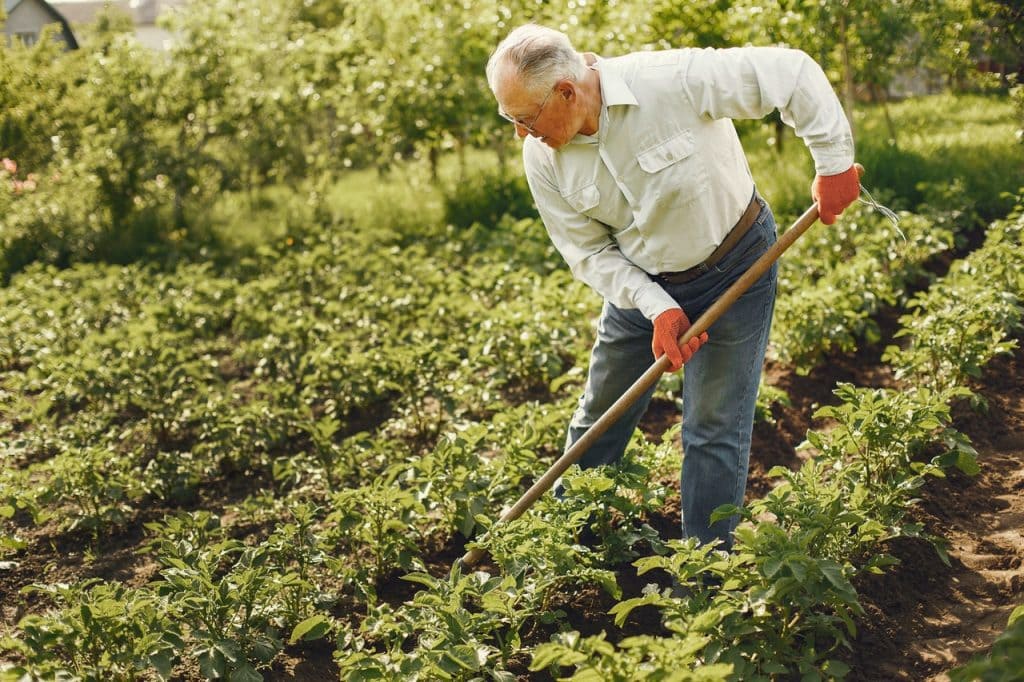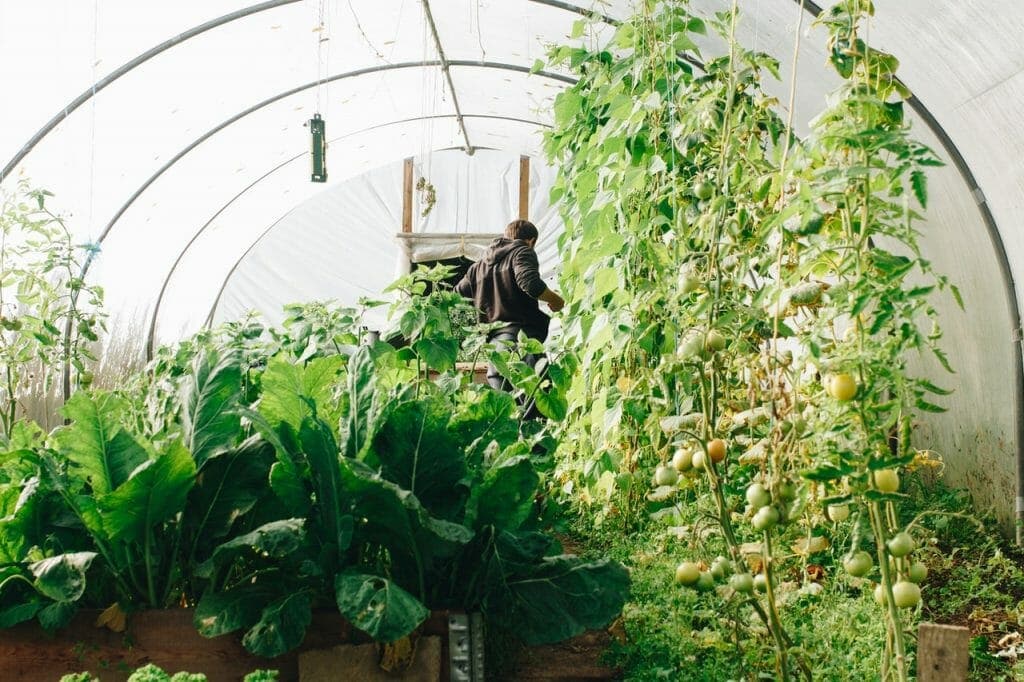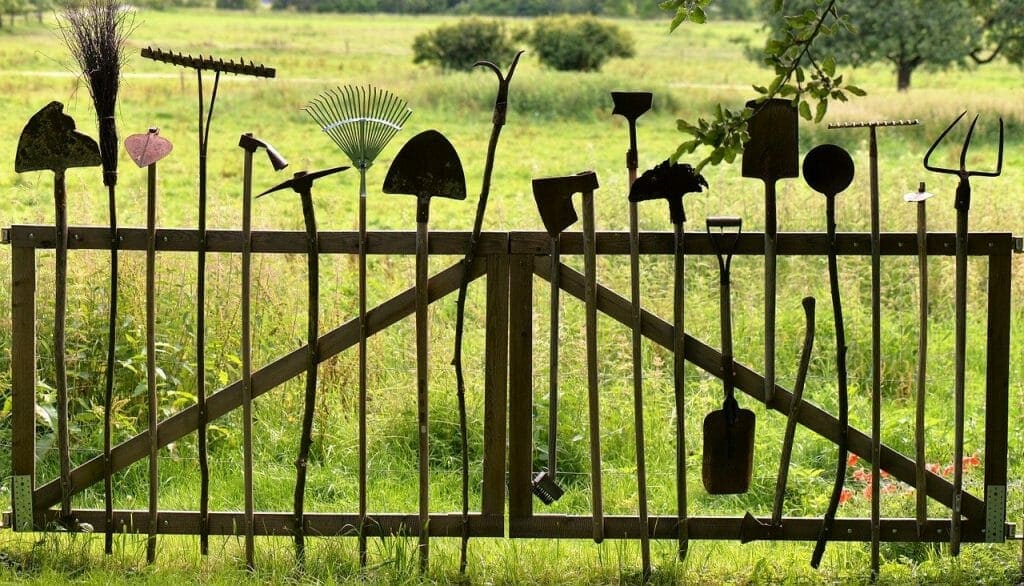Written by Catherine Boeckmann and published on https://www.almanac.com/.
In an unstable, disorienting, and often infuriating world, it can be the purest tonic to see your hydrangea reliably spring to life and throw color around your garden. These days, more and more people are discovering the joys of playing in the dirt — or, as grown-ups prefer to call it, “gardening.”
Grow your gardening knowledge with this primer on planning, planting, and maintaining your garden. As the years go by, you’ll get a sense for what works and what doesn’t, and you’ll continue to build a strong foundation of garden knowledge. Start off with these basic must-knows.
Vegetable Gardening for Beginners
The Basics of Planting and Growing a Vegetable Garden
Ready to jump into gardening? It can be daunting at first, but gardening is an incredibly rewarding hobby to get into. Our Vegetable Gardening Guide for Beginners will help you to plan and grow your tastiest vegetables ever. Find out how much food you need to grow to feed a family, top 10 vegetables for a beginner, and more tips.
Vegetable Gardening for Beginners
Why garden, you ask? If you’ve never tasted garden-fresh vegetables (lots of people haven’t!), you will be amazed by the sweet, juicy flavors and vibrant textures. There’s absolutely nothing quite like fresh veggies, especially if you grow them yourself—which you can!
On this page, we’ll highlight the basics of vegetable gardening and planning: how to pick the right site for your garden, how to create the right size garden, and how to select which vegetables to grow.
Pick the Right Location
Picking a good location for your garden is absolutely key. A sub-par location can result in sub-par veggies! Here are a few tips for choosing a good site:
- Plant in a sunny location. Most vegetables need at least 6 hours of direct sunlight per day. There are a few veggies that will tolerate some shade.
- Plant in moist, well-drained soil. If you have poorly drained soil (water pools), plant veggies in a raised bed. If you have rocky soil, till and remove the rocks.
- Plant in a stable environment. Avoid places that receive strong winds could knock over your young plants or keep pollinators from doing their job. Nor do you want to plant in a location that receives too much foot traffic or floods easily. Plant in a location that would make Goldilocks proud.
Choosing a Plot Size: Start Small!
Remember: It’s better to be proud of a small garden than be frustrated by a big one!
One of the most common errors that beginners make is planting too much too soon—way more than anybody could ever eat or want! Unless you want to have zucchini taking up residence in your attic, plan your garden with care. Start small, and only grow what you know you’ll eat.
Here are some tips for a good-size beginner vegetable garden that can feed a family of four for one summer, with a little leftover for canning and freezing (or giving away to jealous neighbors).
- Make your garden 11 rows wide, with each row 10 feet long. The rows should run north and south to take full advantage of the sun.
- Make sure that you have paths that allow you to access your plants to weed and harvest. The general rule is: Don’t allow more than four feet of plants without access to them. Just makek sure that you can reach the center of the row or bed easily.
(Note: If this garden is too large for your needs, you do not have to plant all 11 rows, or you can simply make the rows shorter.)
Choosing Vegetables!
The vegetables suggested below are common, productive plants that are relatively easy to grow. It would be wise to contact your state’s Cooperative Extension Service to find out what plants grow best in your area.
Top Ten Vegetables
(Tip: Click on a veggie’s name to see its detailed Growing Guide.)
- Tomatoes
- Zucchini squash
- Peppers
- Cabbage
- Bush beans
- Lettuce
- Beets
- Carrots
- Chard
- Radishes
- (Bonus) Marigolds to discourage pests and add some color!
Some guidelines to choosing vegetables:
- Choose what you (and your family) like to eat. If no one likes Brussels sprouts, don’t plant them!
- Be realistic about how many vegetables your family will eat. Be careful not to overplant. (Of course, you could always give your veggies away.)
- Consider the availability of veggies at your grocery store. Maybe you want to grow tomatillo, instead of cabbage or carrots which are available. Also, certain veggies are so far superior when home-grown, it’s almost a shame not to consider (we’re thinking of garden lettuce and tomatoes!). Also, home-grown herbs are far less expensive than grocery store herbs.
- Summer vacation? Remember that tomatos and zucchinis are growing in the middle of summer. If you’re gone part of the summer, you need someone to look after the drops or they will suffer. Or, you could just plant cool-season crops such as lettuce and kale and root veggies.
- Use high-quality seeds. Seed packets are less expensive than individual plants, but if seeds don’t germinate, your money—and time—are wasted. A few extra cents spent in spring for that year’s seeds will pay off in higher yields at harvesttime. If you plan ahead, buying straight from the nursery seedsmen is cheaper and higher-quality. See a list of of mail-order seed catalogs here
Where and When to Plant?
If you are simply growing two or three tomato plants, this process is easy. But if you plant to grow a full garden, you need to consider:
- Where each vegetable will go?
- When each vegetable needs to be planted.
Here are a few guidelines to arranging your vegetables:
- There are “cool-season” veggies that grow in spring (eq, lettuce, spinach, root veggies) and “warm-season” veggies that aren’t planted until the soil warms up (eq, tomatoes, peppers). Plant cool-season crops after spring frost and then plant warm-season crops in the same area later in the season.
- Plant tall veggies (such as pole beans or a trellis or sweet corn) on the north side of the garden so they don’t shade shorter plants. If you do get shade in a part of your garden, save that area for small cool-season veggies. If shade is unavoidable in parts of your garden, save those areas for cool-season vegetables which appreciate shade as the weather heats up.
- Most veggies are annuals (planted each year). If you’re planning on “perennial” crops such as asparagus, rhubarb, and some herbs, provide permenant locations or beds
- Consider that some crops mature quickly and have a very short harvest period (radishes, bush beans). Other plants, such as tomatoes, have a longer period of time. These “days to maturity” are on the seed packet. Vegetables that may yield more than one crop per season include beans, beets, carrots, cabbage, kohlrabi, lettuce, radishes, rutabagas, spinach, and turnips.
- Stagger plantings. You don’t want plant all your lettuce seeds at the same time or all that lettuce needs to be harvested around the same time! Stagger plantings by a few weeks to keep ‘em coming!
When to plant what?
Every region has a different planting time based mainly on their weather, and every vegetable has its temperature preferences, too. See the Almanac’s Best Planting Dates—a gardening calendar customized to your local frost dates. Just enter your zip code!
For specific planting information, see our individual Grow Guides for over 100 popular vegetables, herbs, and fruit. For each crop, we provide specific information about how to plant, grow, and harvest including watering and fertilizing and pest control!
Get Free Help From the Almanac
Beginners, we’d suggest trying out our online garden planning tool. We’ve done a LOT of the research for you. For example, you can draw your garden plan on the computer, drop in your preferred vegetables, and the tool figures out the proper spacing for each type of crop! This way, you don’t waste seed or crowd your plants. Also, the Garden Planner automatically pulls in the frost dates for your specific location!
Plus, you’ll see many free garden plans for inspiration! Over time, you’ll see that this tool also provides “crop rotation” so that if you plan a second season, you properly re-position your plants to avoid pests and disease.
Original post here https://www.almanac.com/vegetable-gardening-for-beginners.



